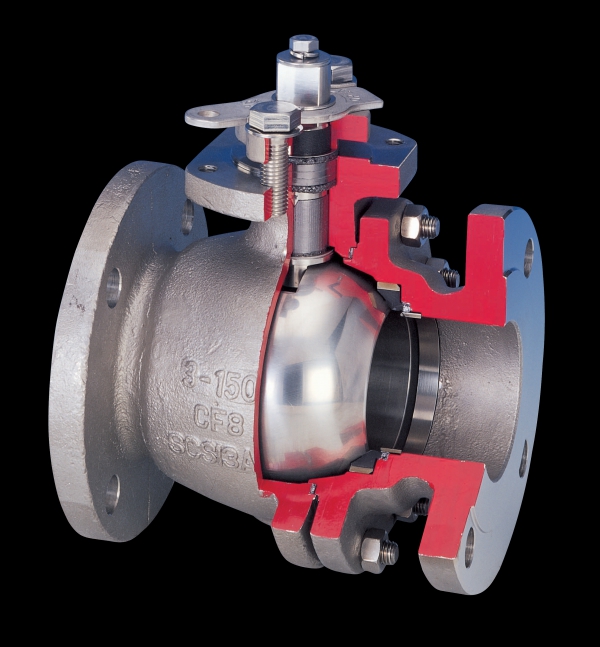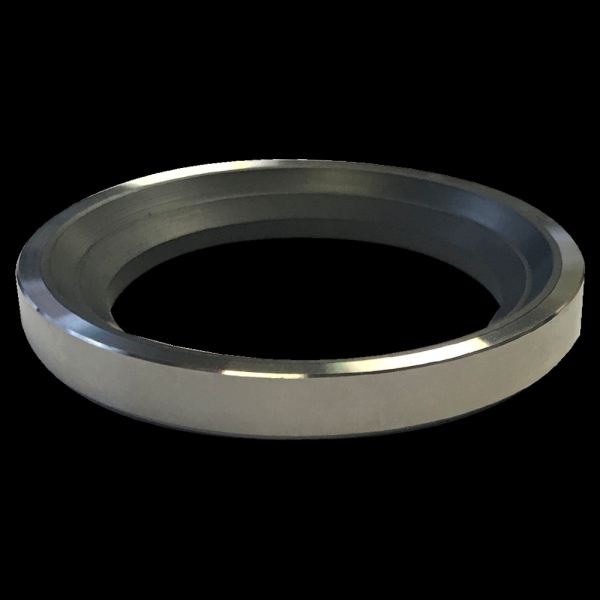Emerson: Consider a graphite infused carbon seat for isolation in steam and high temperature applications

The KTM Gratite® seat ball valve operates across an impressive range of temperatures in steam and thermal fluid applications.

The Gratite® thermal performance seat is designed for high temperatures and positive sealing.

Jeff Roseneder
By Jeff Roseneder, Emerson Automation Solutions
High temperature applications pose challenges to isolation technologies requiring positive sealing, especially in critical processes where loss of product and unplanned shutdowns are extremely undesirable. Isolating flow in critical applications and protecting key equipment remains a top priority for the end user.
The seat material selection is critical when selecting a suitable isolation valve. For ball valves in high temperature applications, end users should consider the characteristics of soft seated valves and metal seated valves.
The conventional ball valve options are a `soft’ reinforced polytetrafluoroethylene (PTFE with reinforcing additives such as glass and carbon) seat or a hard-coated metal seat and ball, both of which can force the end user to compromise in critical high temperature applications. Soft seats typically are designed with full contact between ball and seat, thus wear prematurely with harsh or contaminated processing fluids, causing valve seat leakage. Furthermore, as temperatures increase, PTFE based materials deform and the ability to seal is weakened or diminished. This results in premature replacements and unplanned changeouts.
Metal seated valves, however, provide the high temperature characteristics required. Hard metal seat inserts, stainless steel base materials, appropriate coatings and spring energised seat assemblies are matched to tolerate elevated temperatures and the resulting thermal expansion of materials.
The lapped ball/seat coating provides smooth operation and performance initially due to the typical design of line contact between ball and seat, but over time the dynamics of flow degrade the seat to ball interface. Repairing the seat and ball assembly requires significant time and planning, as the assembly must be extracted, recoated and lapped again. In worst cases, unplanned changeouts shut down operations.
An alternative for ball valve seats is a proprietary blend of carbon, infused with graphite, under the trade name Gratite®. Gratite® seats are effective for high temperature applications because carbon provides the high temperature characteristics required while the infused graphite provides a `soft’ cushion against the ball to achieve the zero leakage desired for liquids and saturated steam. Over time, the carbon material and cushioned graphite withstands thermal cycles and light contaminants, lengthening the working condition of the valve.
During high temperature thermal cycles, the combination of carbon and graphite remains chemically inert for long-lasting performance, beneficial for maximum plant productivity. Even if the seat degrades due to unforeseen contaminants, the seat assembly is quickly interchangeable without the need for a lengthy ball to seat lapping, unlike metal seated designs. This allows for a quick change out and less time for planned or unplanned maintenance.
A recent case study has proven Gratite® effective, targeting steam and high temperature applications. The customer studied their ball valve options for a steam injection header in a refinery coke drum, and understood soft seated valves are not usable in high temperatures. They were also weary of the less than ideal capital and operational expense of metal seated ball valves and the resulting strain on the project budget.
The customer even considered the cheaper but vastly underperforming metal seated gate valve. In the end, after learning of the value of the Gratite® seated ball valve, the customer saved $500K (£360K) on their $3M (£2.15M) order for isolation ball valves. Over time the customer found more than initial savings; as the valves proved superior in reliable sealing performance and reduced loss of product and total cost of ownership.
When selecting the seat for a ball valve in high temperature and steam applications, utilisation of the graphite infused carbon seat provides significant savings in up-front costs, reduces risks of unplanned shutdowns and increases product savings due to unwanted leakage. The Gratite® seated ball valve solution is an industry proven technology providing optimal performance and savings on steam and thermal fluids and gases for temperatures up to 500°C (932F) and rated line pressures up to ANSI Class 600.
www.Emerson.com/uk/KTM
About the Author
Jeff Roseneder is the product director for Emerson’s KTM Ball Valves, providing solutions for the global petrochemical, chemical and process licensors and applications. After earning a business degree from the University of Southern Queensland, Australia, Jeff obtained over 35 years of extensive global sales, marketing, and strategic product management experience in the valve industry. His expertise has earned him positions of increasing responsibility, most recently in Houston and now based in Singapore.

| Telephone: | 0161 7907741 |
| Email: | uksales@emerson.com |
| Website: | www.emerson.com/en-gb |
| More information on the Emerson Sales UK Ltd BVAA Member Directory Page |
Search related valve / actuator articles: Emerson Sales UK LtdIssue 63Seals







-web.jpg)





